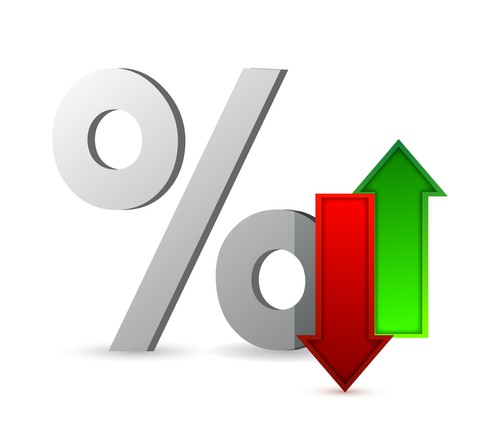How to Protect Your Investments As Risks Continue to Mount Contrarian Profits
Post on: 14 Апрель, 2015 No Comment

How to Protect Your Investments As Risks Continue to Mount
The current market trend has taken on some very interesting characteristics. Ever since stocks bottomed in early 2009, the trend has been unmistakably bullish.
Sure, there were some minor pullbacks when traders got worried about the trouble in Europe or the U.S. debt ceiling. But by and large, this has been a very steady bull market. In fact, U.S. equities have become steadier as the trend has continued. So far in 2013, we havent seen anything close to a significant pullback that would worry investors.
Yet there is the nagging issue of fundamental risks. And as contrarians, we can’t be content to rely on which way the herd is going. You see, despite the steady advance that we have seen over the past several years, there are plenty of issues to be concerned about. Here are just a few:
Employment metrics still leave much to be desired. The statistics are skewed because the official unemployment figures dont actually count workers who are not actively looking for work – but even still, it is clear that the economy isnt generating a robust number of new jobs.
Equities are trading near peak valuation levels. This is especially true for blue-chip stocks with relatively stable earnings. When investors are paying premium prices for these stocks, there is always a risk that valuations will return to more normalized levels – which would mean lower stock prices.
The U.S. government is in a state of high uncertainty as lawmakers struggle to determine how to manage long-term debt and budget issues. We received a temporary reprieve last month, but the issues still need to be tackled. Another government shutdown (or congressional showdown) could be a catalyst for lower stock prices.
The Fed is in a state of transition, which also adds to uncertainty. Traders expect Janet Yellen to take over the role of chairman next year, but we are receiving mixed messages from the Fed as to whether it will continue current stimulus plans or not.
The term mixed messages also applies to the market itself. On one hand, were seeing a steady advance that should give us confidence in putting our investment capital to work. On the other hand, the risks of an unexpected drop continue to mount, especially as prices move higher.
Subscribers to my Income & Dividend Report service are currently sitting on some very attractive gains. Weve been able to pick up some great dividend stocks that have moved higher not only because of the quality operations and strong earnings, but also because of the strong bullish trend in the markets.
One of the biggest issues that we face right now is how to protect our profits in the event that the market turns around and moves lower. There are several different strategies that can be used at a time like this, and one of the very best approaches for long-term investors is to implement a trailing stop strategy.
Trailing Stops Explained
If youre not familiar with the investing term stop or, more accurately, stop loss, you should be.
A stop loss is a point at which you will sell a stock if the position moves against you. For instance, if we buy a stock at $50 and watch it trade up 50%, to a price of $75, we may place a stop 20% below the current price. This would ensure that if the stock turned around and traded lower, we would be able to get out of our position with a profit (rather than watching our paper gains evaporate).
Taking this stop idea one step further, we can use a trailing stop to dynamically manage our risk as our position moves higher. Heres how a trailing stop works
Lets say that we own a stock that has moved steadily higher and continues to make new highs. We may choose to protect our gains with a 20% trailing stop. This simply means that every time our position hits a new high, we adjust our stop to be 20% below that new high.
This type of strategy can be very helpful because it adjusts dynamically, locking in more profits every time the stock hits a new high. But theres one drawback: The process requires you to check your stock every day and calculate a new stop price every time your stock hits a new high.
A Trailing Stop Tool Worth Investigating

Late last week, I got an email from a colleague and long-time friend Richard Smith. Richard and I met in Baltimore a number of years ago at a Christmas party. We struck up a conversation, and I was very interested to hear about his research projects. You see, Richard has a Ph.D. in mathematics, and he developed significant expertise in building trading systems that help investors and traders better manage their portfolios.
Last week, Richard filled me in on his TradeStops product that is designed to help traders monitor their trailing stops on a day-to-day basis.
Basically, this program lets you input all of the stocks that you are currently holding or tracking and then set up an alert for your trailing stops. You can use whatever variables you want to. For instance, aggressive traders might use a 10% trailing stop, while long-term investors may wish to use a 30% trailing stop.
The TradeStops program automatically tracks your portfolio – using the specific trailing stop variables that you set up – and notifies you whenever a trailing stop is hit. Pretty cool!
This is a great tool for investors who dont have time to check prices every day and recalculate new stop points, and its also a great tool for active traders like me. I always wind up with too much to do each day, but not enough time. So with the TradeStops program, I can take one more thing off my list of duties each day and simply use this program to notify me if my stops have been hit.
Over the next few weeks, Im going to be exploring ways to use this program as part of the Income & Dividend Report. I think this will be a strong tool for us to use for protecting the profits we have built.
In the meantime, take a look at the service here. I think youll be pleased with what you see.
On January 1, 2014, the face of American health care changes forever
New legislation will FORCE 25 MILLION AMERICANS out of the shadows – and into the health care system. Forget for a moment about who will end up paying for all of this. Turn your attention to the other side of the equation – the one no one is talking about. Here’s the bottom line for savvy investors: Health spending is going to explode, and guess which company is poised to rake it in, STARTING NEW YEAR’S DAY 2014?














